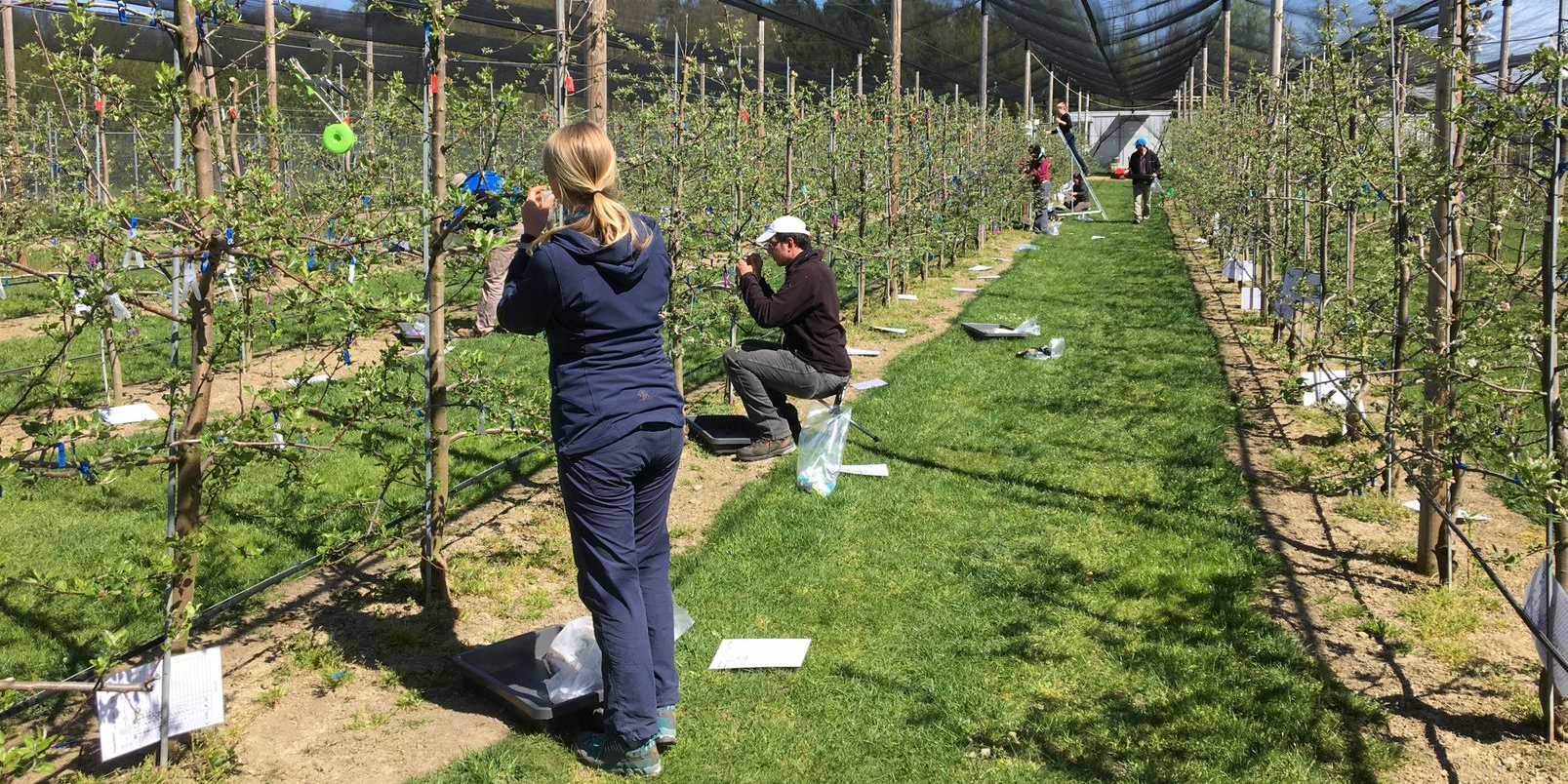Field evaluation of the cisgenic fire blight resistant apple line C44.4.146
A cisgenic modification in ‘Gala Galaxy’ conferred resistance to floral fire blight and maintained the cultivar-specific characteristics.

The Swiss consumed around 14 kg of apples per person in 2020 (FOAG), making it the most consumed fruit in the country. ‘Gala’ and its natural mutants are among the most popular apple cultivars, but they are susceptible to diseases and require high input of plant protection products during production. Fire blight is the most devastating bacterial disease of apple, and the use of resistant cultivars will be key for future strategies to combat this disease. The development of these cultivars can take decades through conventional breeding, as natural resistances were mainly found in wild apple species with poor fruit quality traits. Genetic modification techniques such as cisgenesis can accelerate this process, provided that the development of such apple lines does not affect other cultivar-specific characteristics.
The ‘Protected Site’ in Zurich-Reckenholz (external page www.protectedsite.ch) provides a unique opportunity to address this question in apple under natural environmental orchard conditions. A field trial was conducted between 2016 and 2020 to evaluate the intended and unintended effects of the cisgenic ‘Gala Galaxy’ line C44.4.146. This cisgenic line was developed at ETH Zurich and genetically engineered to carry a copy of the apple gene FB_MR5, a major fire blight resistance gene found in the wild apple Malus x robusta 5. The cisgenic line was compared to its wild type, an in vitro cultured ‘Gala Galaxy’ line, ‘Gala Galaxy’ from two different nurseries, two other natural ‘Gala’ mutants, and the original ‘Gala’ cultivar.
During five years, a total of 44 phenotypical traits were assessed on the trees and fruits. No trait differentiated C44.4.146 from the other ‘Gala’-related genotypes over all observation years. Interestingly, the results showed that the in vitro establishment (performed before the genetic modification leading to C44.4.146) introduced more evident changes than the genetic modification that led to C44.4.146. Untargeted analyses of the fruit metabolome in fruit flesh and fruit peel were conducted in 2018 and 2019. No metabolite feature was present or absent only in C44.4.146 or showed a significantly different abundance in C44.4.146 compared to the other ‘Gala’-related genotypes over both years. Finally, greenhouse experiments in 2018 and 2019 with field-grown trees confirmed that the resistance gene FB_MR5 is also functional when trees are inoculated through their flowers.
In a separate publication, leaf material of the cisgenic plants and its controls were fed to two arthropod species, springtails and fruit flies, to test the impact of the GM apple trees on two non-target organisms. The leaf composition of C44.4.146 and its wild-type were not significantly different and the cisgenic leaf material did not negatively impact the arthropod fitness or survival.
These findings provide valuable insights into the safety and efficacy of the cisgenic technology for introducing target traits into apple, while maintaining the original cultivars’ characteristics. Cisgenesis could contribute to the development of sustainable agricultural practices by reducing the economic and environmental costs in today’s apple production.
This research was supported by the Swiss National Science Foundation (SNSF) (grant number 31003A_163386) and was a team effort of the Breeding Research group, the Biosafety group, and the Extension Horticulture group at Agroscope in Zurich-Reckenholz and Wädenswil and the Molecular Plant Breeding group at ETH Zurich.
Citation:
Schlathölter I, Broggini GAL, Streb S, Studer B and Patocchi A (2023) Field study of the fire-blight-resistant cisgenic apple line C44.4.146. Plant J, 113: 1160-1175.
external page https://doi.org/10.1111/tpj.16083
Affiliated paper: Schlathölter I, Meissle M, Boeriis T, Heimo D, Studer B., Broggini GAL, Romeis J and Patocchi A (2022) No adverse dietary effect of a cisgenic fire blight resistant apple line on the non-target arthropods Drosophila melanogaster and Folsomia candida, Ecotoxicol Environ Saf, 241.
external page https://doi.org/10.1016/j.ecoenv.2022.113749